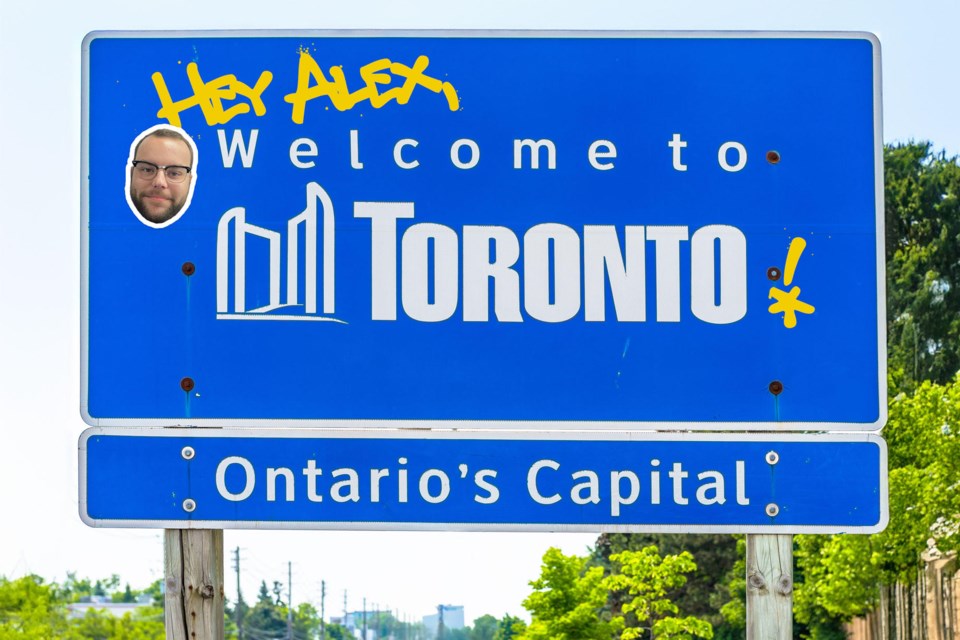Before I moved to Toronto last month, I was warned by several friends that grocery shopping downtown is a completely different experience than in northern Ontario.
“It’s a grocery store desert down here,” they’d say, or, “The prices are out of hand, find deals where possible.”
It’s not exactly what you want to hear as a guy who’s now without a car, but it’s to be expected I suppose.
A pandemic, a college diploma and four years of growing up separate me from the last time I briefly lived in the city, so this is really the first time I’ve grocery shopped in Toronto consistently — rather than overspending on food delivery.
Incidentally, the condo I moved into is on top of a Longo’s — a stereotypically more expensive grocer that has great hot food.
I’ve personally always been a Metro guy. I was a three-minute drive from one when I lived in Sault Ste. Marie and it was among the more affordable options available to me back home. Shopping there just made sense.
Now, being an elevator ride away from Longo’s, I was excited about having that same kind of convenience. However, I was told by several locals to avoid going there or else my bank account would begin to resent me (it wouldn’t be the first time).
So, I started looking for other options.
I live in the heart of the entertainment district, steps away from Scotiabank Arena and Rogers Centre, yet somehow Metro is still a 20-minute walk from my apartment. No Frills is 30 minutes. Other than those two grocers, the neighbourhood is mostly filled with convenience stores.
It didn’t take long to understand what my friends meant by their “desert” remark.
Luckily, I don’t mind walking. If the prices were significantly lower at other grocers, then I’d be game for putting in some extra steps if it meant saving a few bucks.
So, I did my homework and started comparing prices on common items I would normally shop for between Longo’s and Metro.
With Halloween coming up, I can guarantee you won’t catch me buying a large pumpkin from Longo’s for nine bucks when there’s an identical one for less than four bucks at Metro.
But other results surprised me.
Bread, ground beef, butter, milk, eggs, sliced mushrooms, orange juice, ketchup and pop were all virtually the same price between the two competitors.
Other items like chicken breasts, Black Diamond cheese, onions, potatoes, vegetable oil, soup and toilet paper, when combined, were seven dollars cheaper at Metro.
Overall, a $200 order of groceries at Longo’s — items that I like to stock my kitchen with — was $20 more expensive. These are two stores that are owned by different companies, but the prices are relatively comparable.
Factoring in the time that it would take to walk to Metro and back, or alternatively, having to pay for an Uber depending on the size of my grocery load, I realized the commute would rarely be worth it — and that was a very friendly surprise to me.
Don’t get me wrong, groceries are still ridiculously expensive. Nobody should have to pay eight dollars for butter or nine dollars for a case of pop.
But I no longer feel like I’m living in a “grocery store desert,” or that I need to avoid shopping at a particular market just because they have more expensive, exclusive items that I would never personally buy.
It’s worth noting that No Frills, while it is far, has some pretty great deals that are hard to pass up. I don’t know if you’ll find a ten-pound bag of yellow potatoes for $1.77 anywhere else in Toronto.
Eggs, sliced mushrooms and most of their poultry section are notably cheaper too, so if I’m ever in the area, it’s definitely worth the visit. I’d be shopping there every time if it was more accessible.
And perhaps what surprised me the most? My grocery bills are nearly identical to what they were in the Sault — a city with 40 times fewer people than Toronto. I thought for sure I’d be paying significantly more here. Rent on the other hand…
